Adventurers in New England
Chapter Twenty-Eight
French Quarter, Mississippi River crossing
& a visit to Algiers
New Orleans, LA
by
Robin Bowers
July 5, 2015
Sunday
Text and Photos by Author
The author retains all
rights. No reproductions are allowed without the
author's consent.
Comments are appreciated at... yr.mmxx@gmail.com
O
what a beautiful morning to start this third day in The Crescent
City. The morning started out pleasantly but stormy conditions
in late afternoon were in the forecast. After an enjoyable
breakfast at the hotel buffet, I went across St. Charles Ave to
the streetcar stop as I had the last past two days and bought my
Jazzy one day pass. Today would start by a visit to The French
Quarter.
The French Quarter - some 90 blocks between
Canal Street, Rampart Street, Esplanade Av. and the Mississippi
River - represents the original French Colonial settlement of
Nouvelle Orleans. Known as the Vieux Caree' (VOO cah-RAY) or
"old square," the Quarter was laid out by military engineers in
a simple gridiron pattern with straight narrow streets.
This city lays claim to the
oldest operating street railway line in the world, the oldest
operation streetcars in North America, and an urban streetcar
system that, in contrast to many other areas, has fought back
from near extinction to expand along city streets that in some
chases haven't enjoyed rail service in more than half a century.
A look at the system begins, naturally enough, with the
6.5-mile-long St. Charles Avenue line, the undisputed world
record holder for longevity. Service began on September 26,
1835, and for more than 180 years, through wars, riots,
epidemics, hurricanes, and various other natural disasters, the
St. Charles cars have posted an almost unbroken, unending story
of reliability and success. Cars were initially pulled behind
horses and even steam engines, and more than 50 years passed
before the then-modern miracle of electricity made its
appearance. On February 1, 1893, a parade of seven cars ushered
New Orleans into the electric age. The St. Charles line was the
first rail line in the city to be electrified, and it opened the
door for what would rapidly follow. In less than 10 years, the
day of the mule car had ended, replaced seemingly overnight by
the exciting new technology that reached all corner of the city.
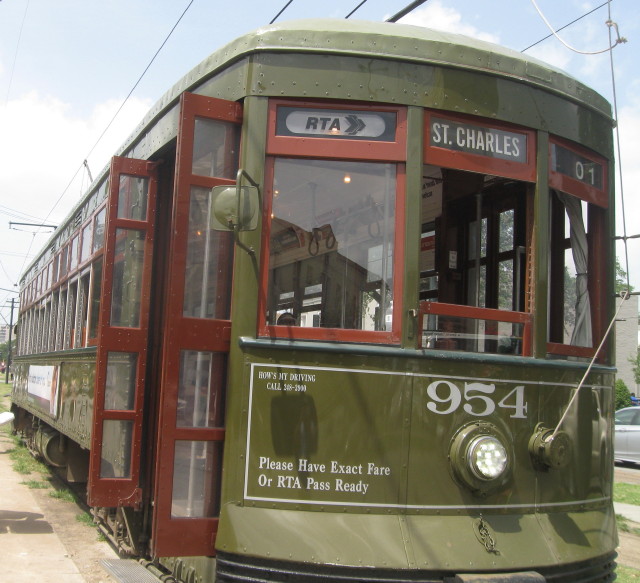
Only 35 cars remain from a fleet 73 of the 900 series cars
built by the Perley-Thomas Car Co. in 1923-24. They were
extensively rebuilt in the early 1960s, and further modified a few
years later, leaving them in like new condition.
I boarded the streetcar and
rode it to the end of line on Canal St. There I would transfer
to the Canal St. line and take that to the river bank. Then
another transfer on the RiverFront Line to Jackson Square.
At Bourbon and Canal, I left
the St. Charles car and waited for a Canal St. car going my way.
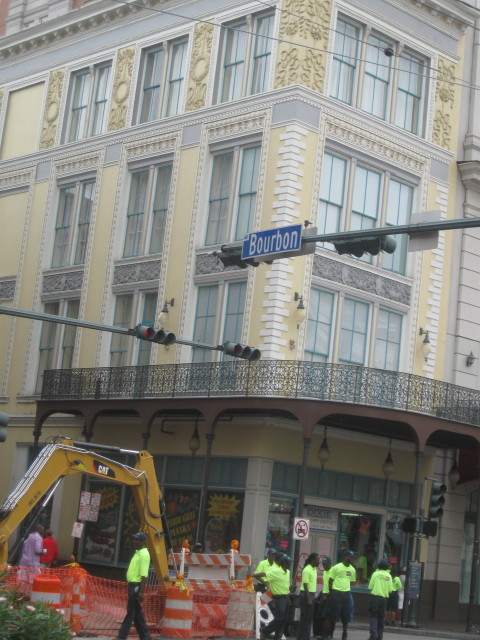
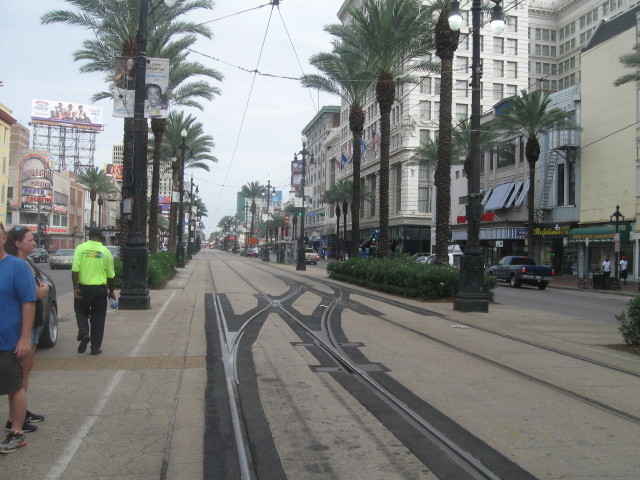
Looking up Canal St. with my back to the Mississippi River and
standing on neutral ground.
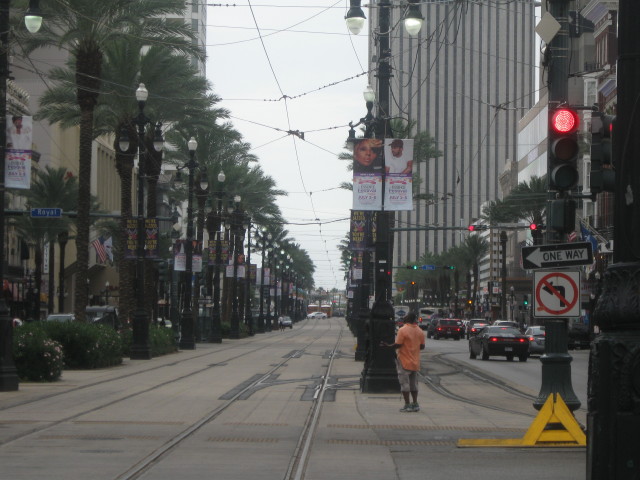
On Canal Street at Royal St. looking towards the river.
The lamppost banners are advertising the Essence Festival, 7/2 -
7/5 with Mary J. Blige and Kendrick Lamar. This festival drew big
crowds to the city, using the Super Dome, convention center and
several hotel ballrooms for their events. It is an annual event
here around Forth of July.
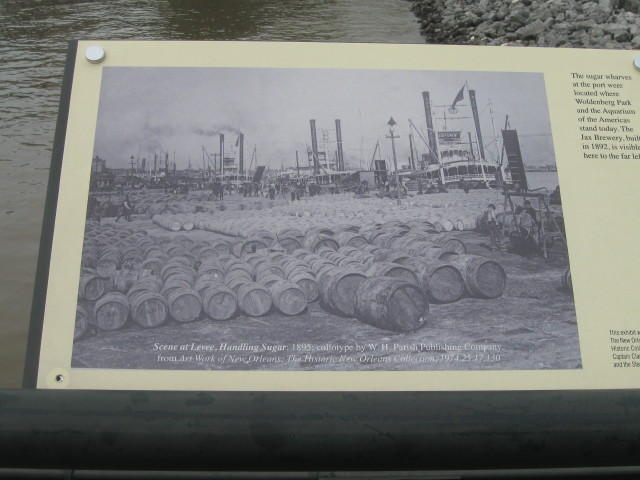
Scene at Levee, Handing Sugar, 1895: collotype by W.H. Parish
Publishing Company.
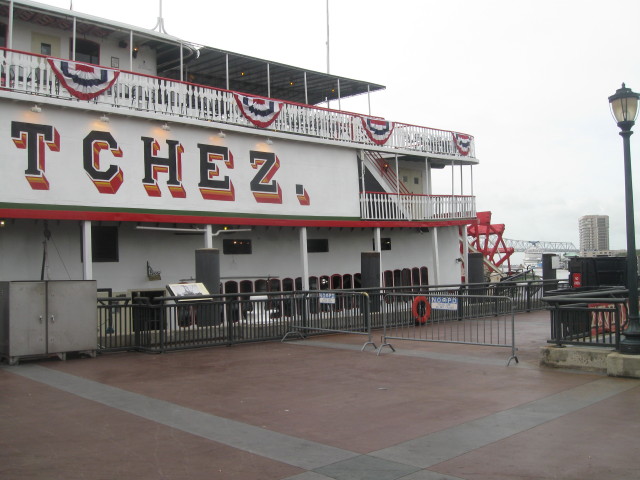
Steamboat Natchez.
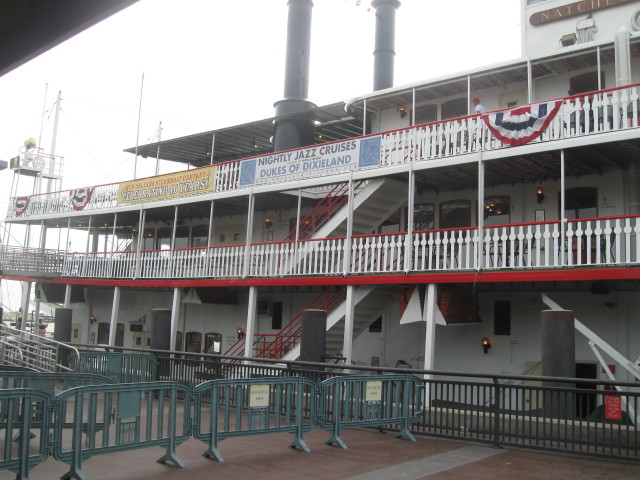
Steamboat Natchez docks at the Toulouse St. Wharf at Jackson
Square. This stern-wheel steamboat is one of the last authentic
steamboats on the Mississippi River.
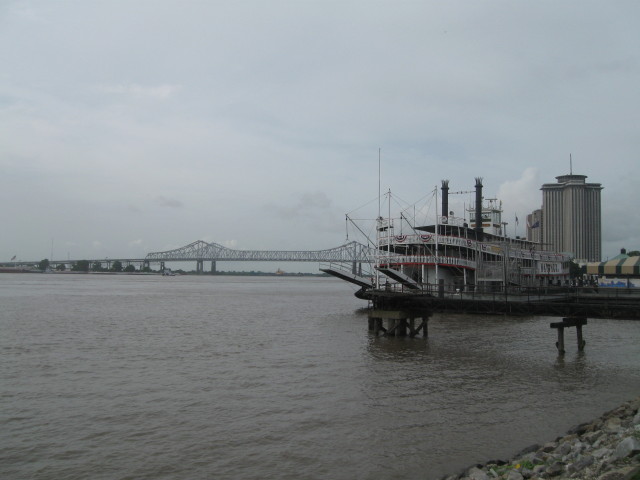
US Bus 90 Bridge - Pontchartrain Expy.
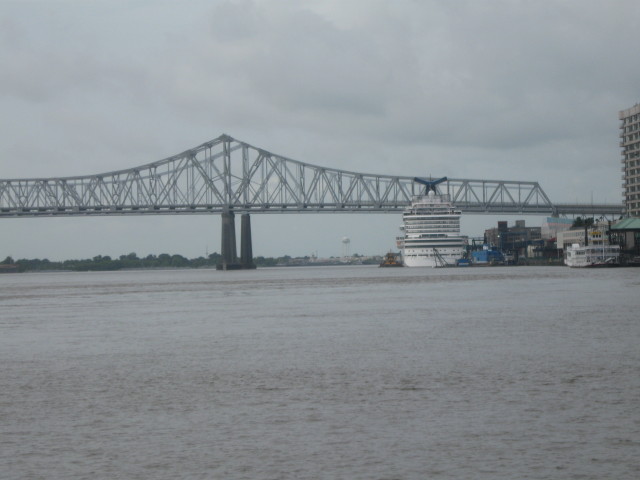
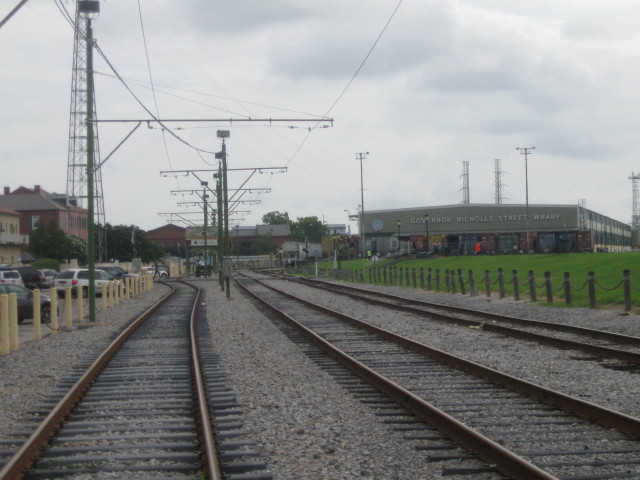
Riverfront tracks on left and center. Right track is freight line.
Looking toward French Market end of line.
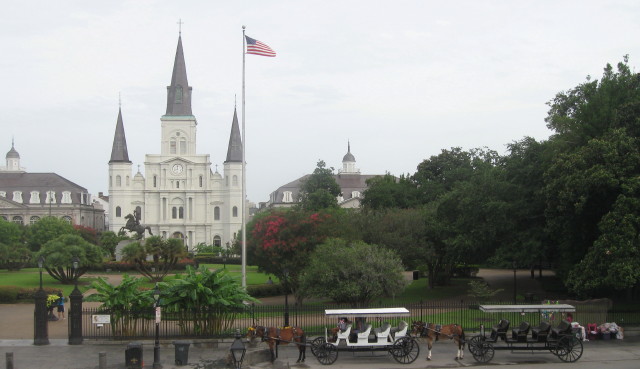
Know as the Place d'Armes by
the French and Plaza de Armas by the Spanish, Jackson Square was
renamed in 1848 in honor of Gen. Andrew Jackson, the hero of the
Battle of New Orleans during the War of 1812. Jackson Square is
in the heart of the French Quarter between Decatur and Chartres
Sts. Old Hickory's equestrian statue stands at the center.
The historic center of the city, Jackson Square is also the
Quarter's unofficial Left Bank. Sidewalk artists, palm readers
and street performers draw daily crowds.
Now it was time for coffee
and doughnuts.
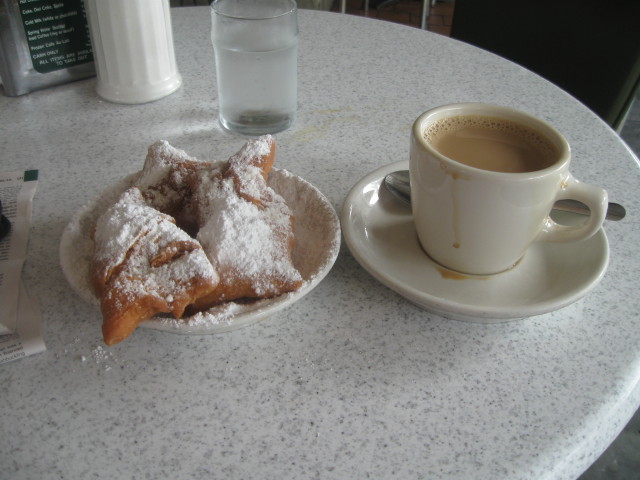
Experiencing a New Orleans tradition, Cafe' Du Monde.
Except for facade renovations, not much has changed at this coffee
stand since steaming
cafe' au lait (a blend of equal
parts of chicory coffee and hot milk) and
beignets (fried,
confectioners' sugar dusted doughnuts) were first served in 1862.
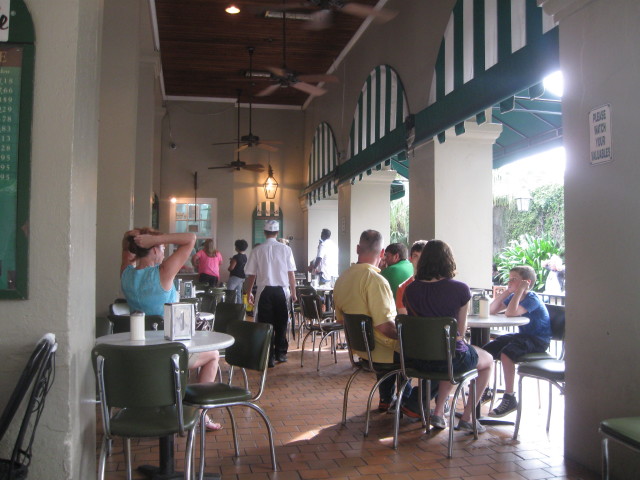
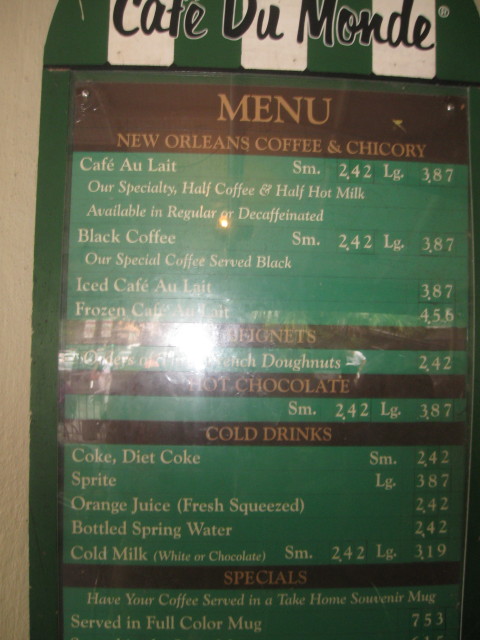
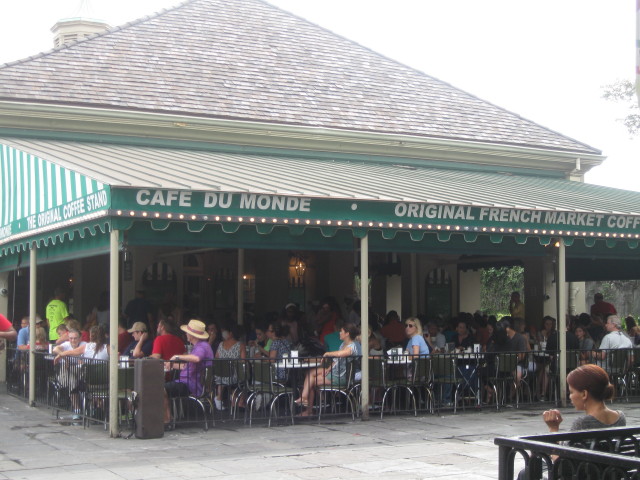
After a very enjoyable coffee break, I walked across the street to
see Old Hickory and the Cathedral-Basilica of Saint Louis King of
France.
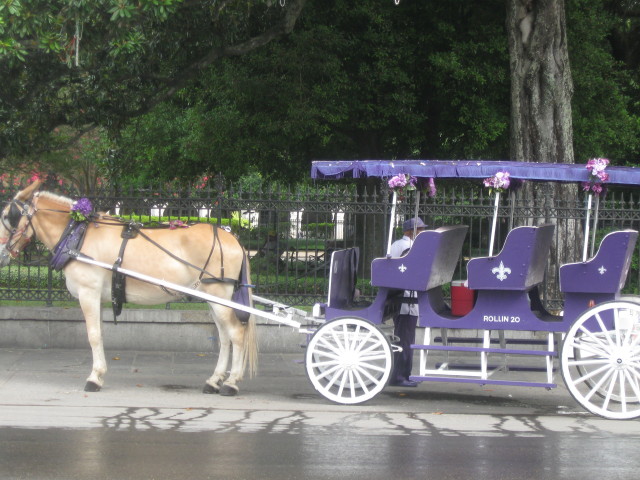
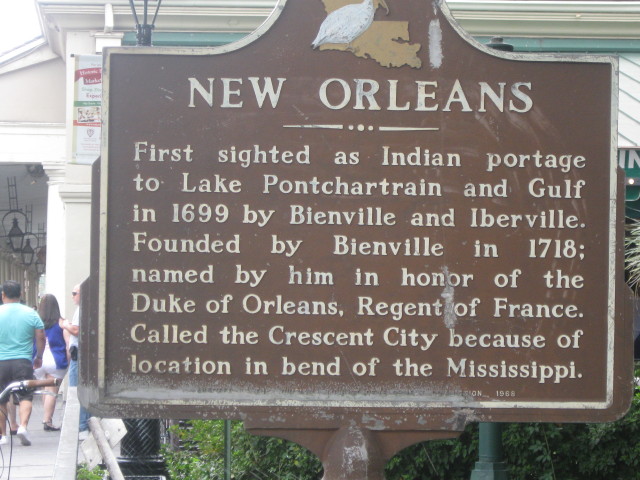
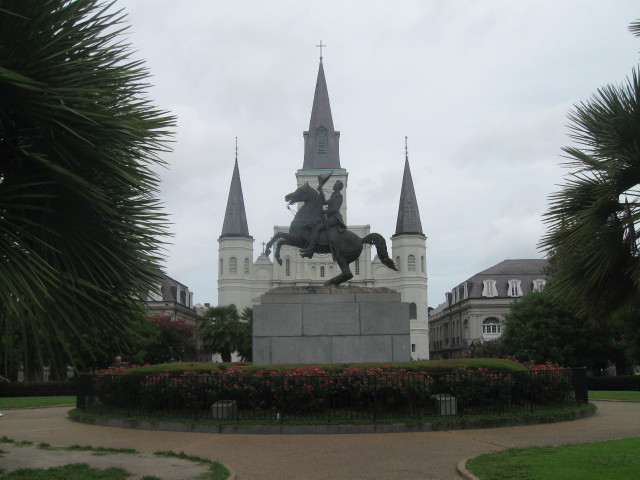
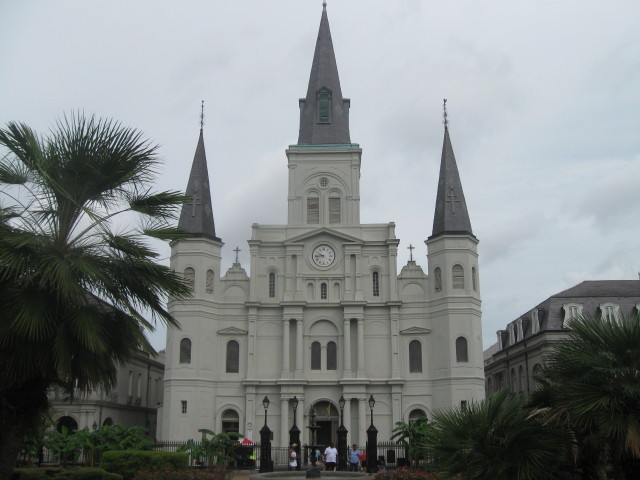
Cathedral-Basilica of Saint
Louis King of France is the crown jewel of Jackson Square. One
of the oldest and most photographed churches in the country, the
cathedral is a combination of three places of worship built on
this site. The first church can be traced to 1727. The second
was completed in 1794 as part of the beneficence of Don Andres
Almonester de Roxas, who spent a substantial part of his fortune
rebuilding New Orleans after the second great fire. Don Andres
is among the distinguished Frenchmen and Spaniards interred in
the church.
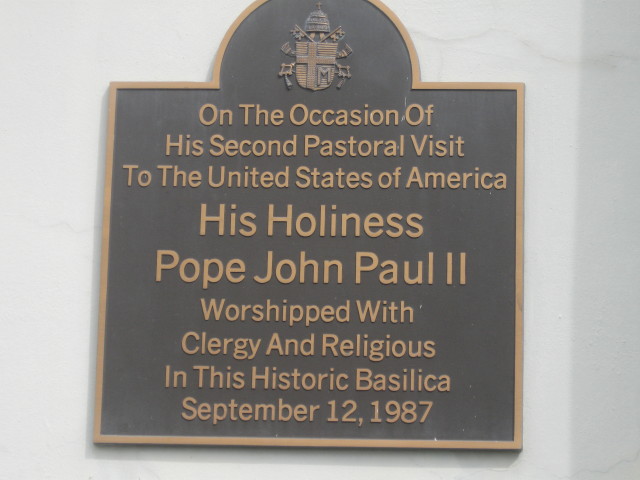
Remodeling in 1851
maintained the original Spanish facade of the church, but the
current nave was rebuilt in the style seen today. St Anthony's
Garden behind the church was once part of the original vegetable
garden and, contrary to legend, was never a dueling spot. The
basilica remains an active force in the life of New Orleans. My
cousin said she had attended several nice weddings here over the
years.
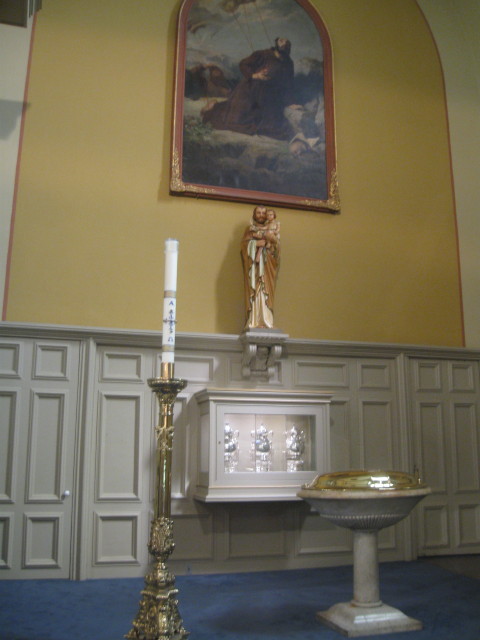
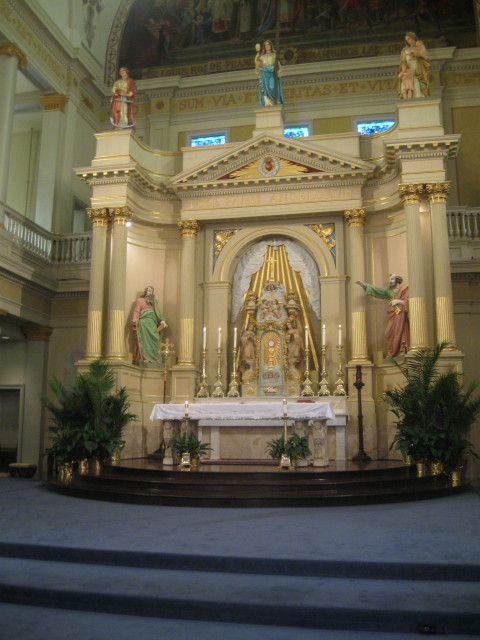
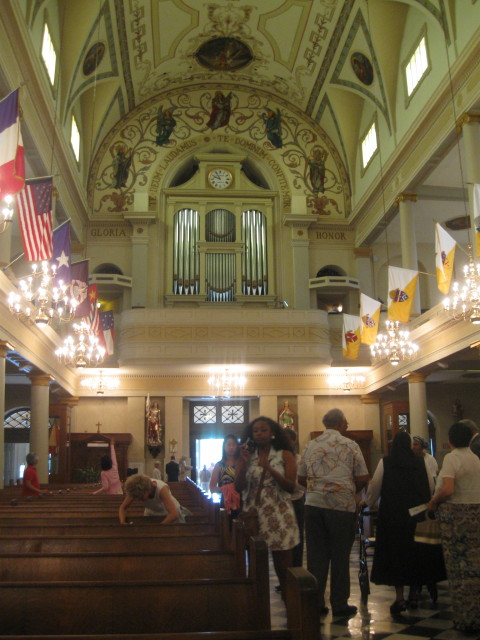
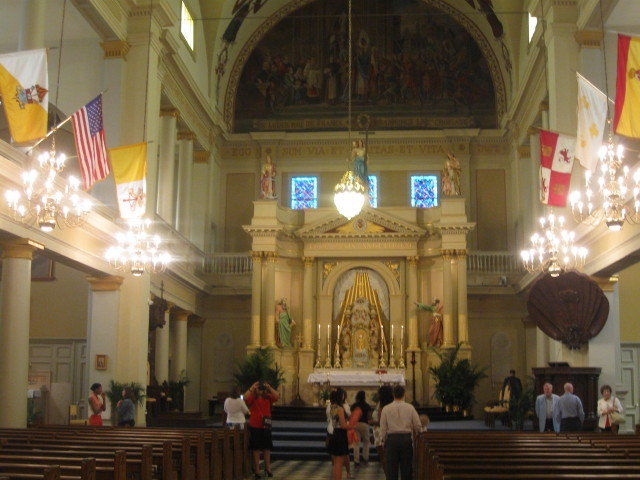
After leaving this beautiful church, I walked outside to St. Ann
St.
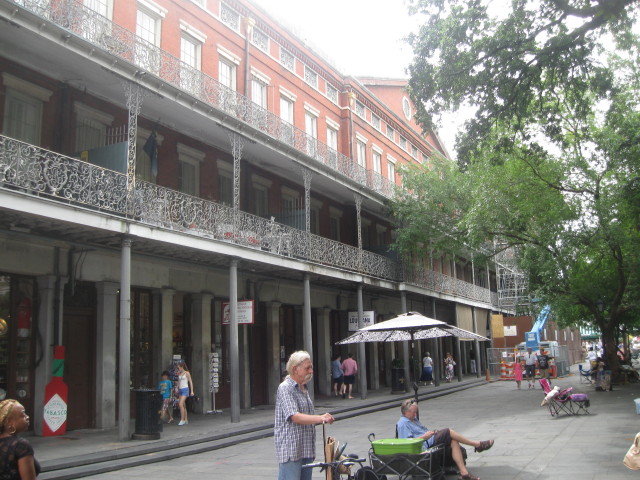
Pontalba Buildings flank
Jackson Square on St. Peter and St. Ann Sts.. The red brick
apartment houses were erected in 1849 by the Baroness Micaela
Almonester de Pontalba, who is credited with transforming the
dusty parade ground into a handsome garden park. The
Renaissance-style buildings were intended to stem the uptown
flow of business. Although they failed in that, for many years
they were among New Orleans' most desirable addresses.

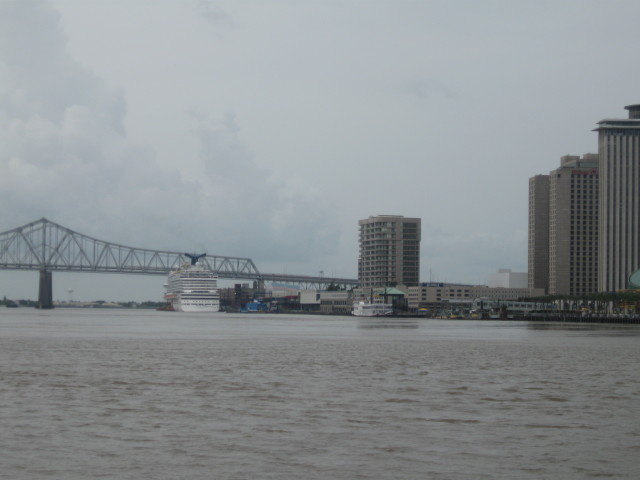
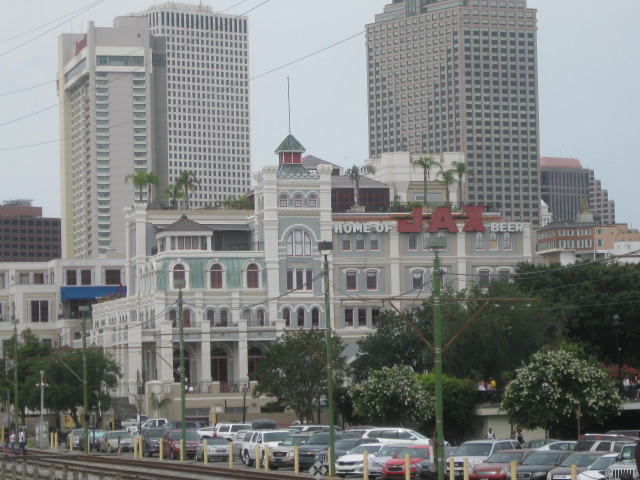
The Shops at Jax Brewery, a
complex of retail stores, kiosks and eateries overlooking the
Mississippi River and the dock on the Steamboat Natchez,
is at Decatur and St. Peters streets in a former
turn-of-the-20th-century brewery.
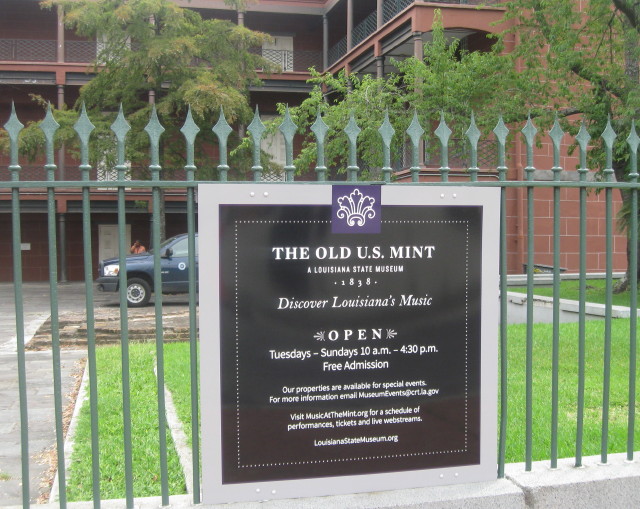
The 1835 structure was a federal mint 1836-61 and was the
Confederacy's only mint for a few months in 1861. It continued as
a US mint until 1909. The site was renovated in the 1850s and
blends Classical Revival and Victorian styles.
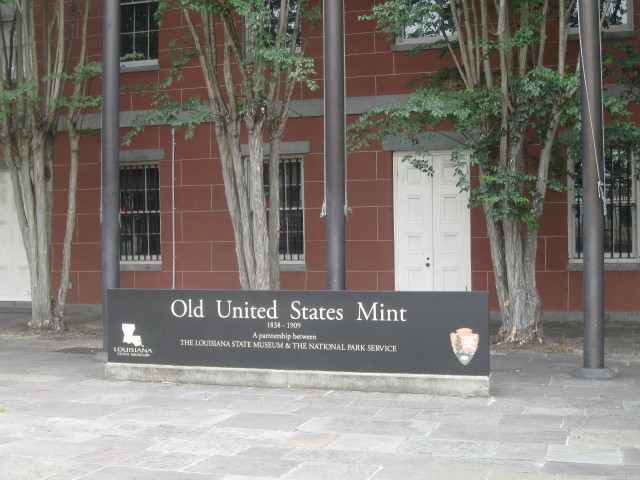
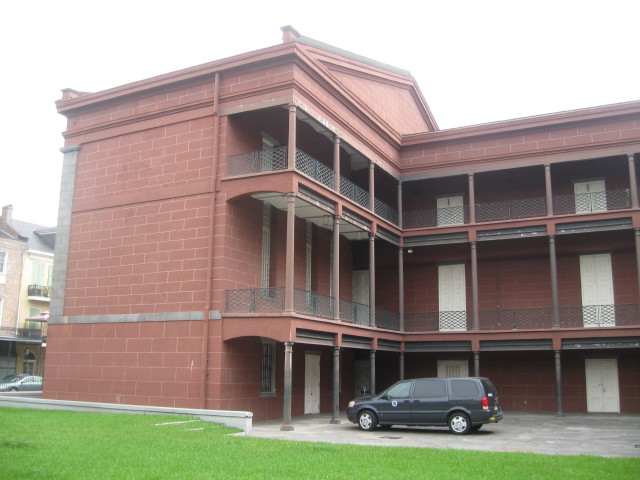
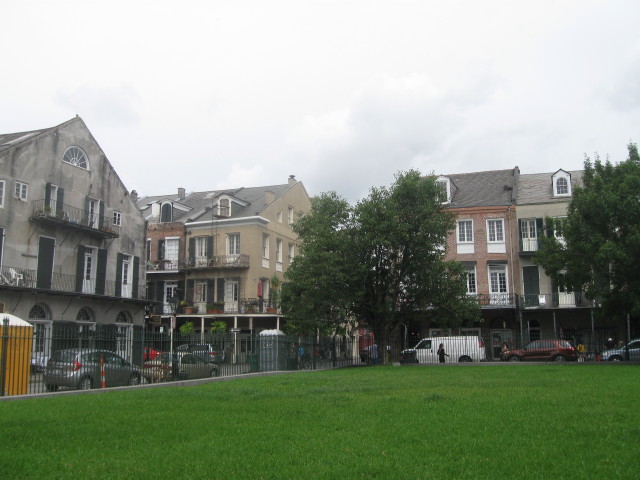
French Quarter neighborhood adjacent to the Old Mint.
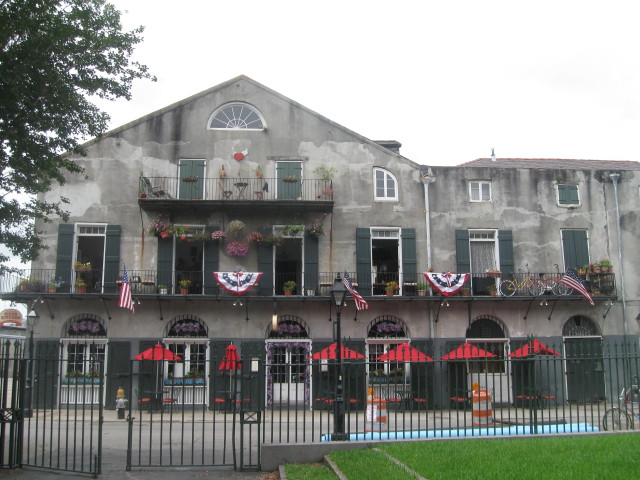
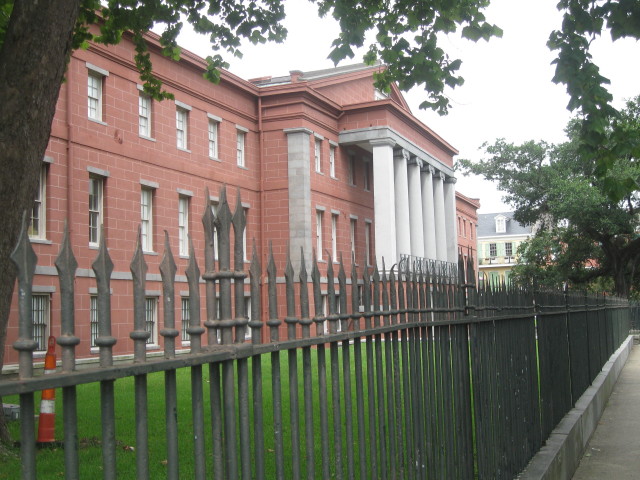
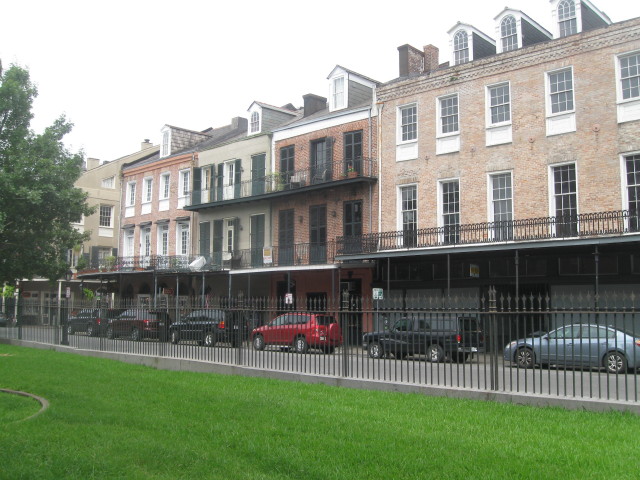
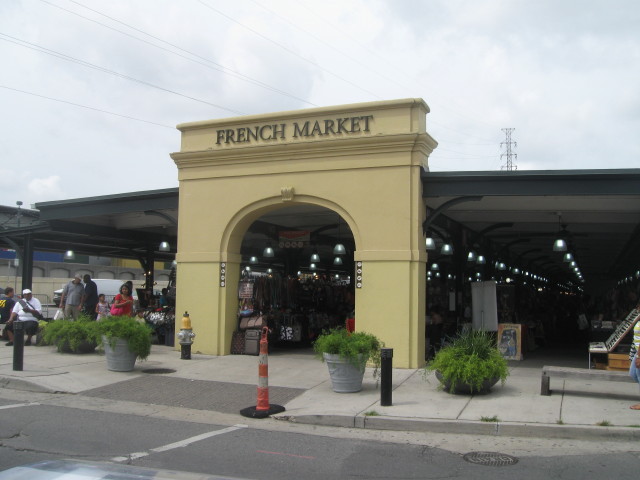
The French Market has its origins as a Choctaw trading ground even
before the city was established by Jean-Baptiste LeMoyne in 1718.
Among the Native American trade goods was a finely ground powder
made from sassafras leaves- the file' (FEE-lay) sought by Creole
cooks to thicken gumbo.
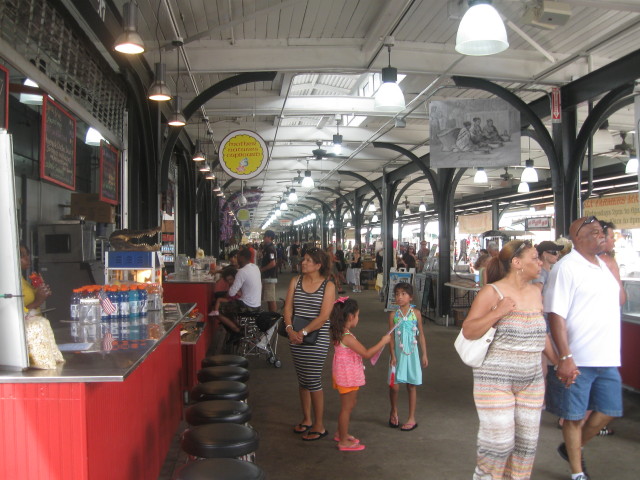
The market complex consists
of a series of colonnaded buildings stretching along Decatur and
N. Peters streets from St. Ann to Barracks streets, with gift
shops and bazaars, clothing stores, a candy cookery, more coffee
stands and informal eateries.
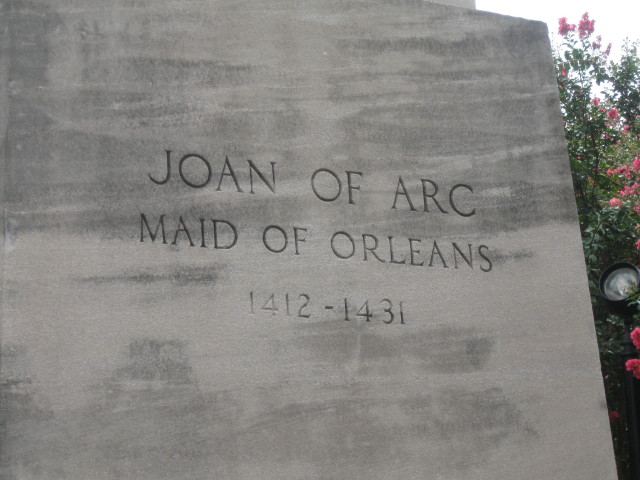
The 13-foot-tall gilded statue of Joan of Arc on the Place de
France, a tiny wedge of ground. A gift from the people of France,
the Maid of Orleans stands as another reminder of the city's
French connection.
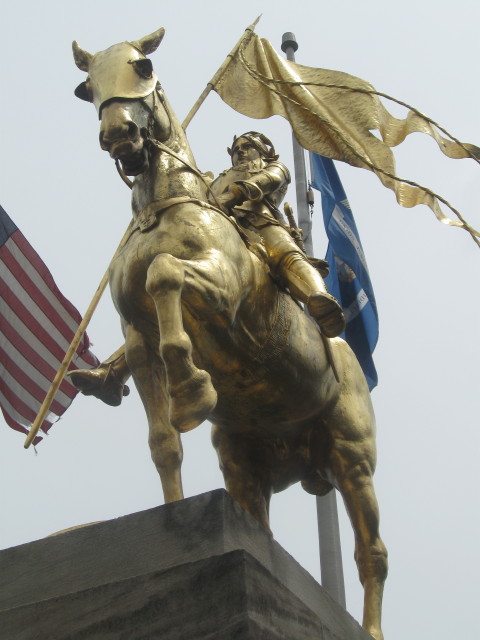
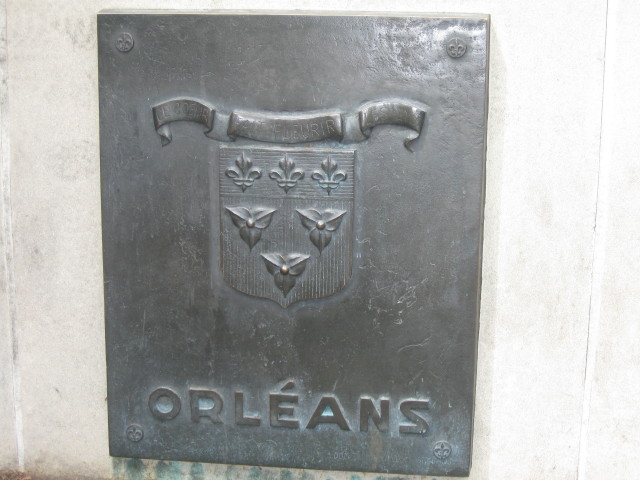
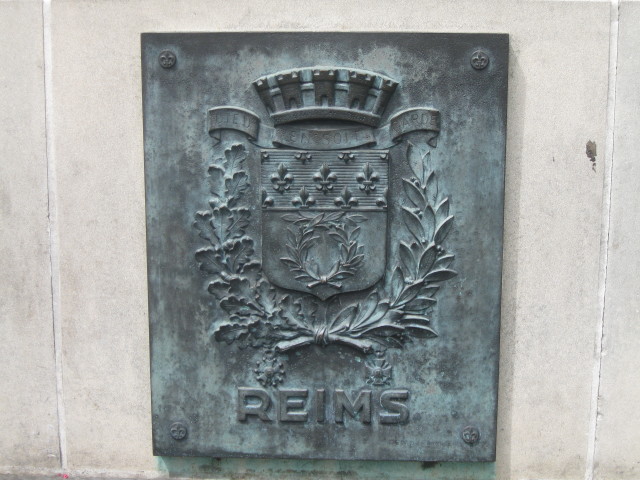
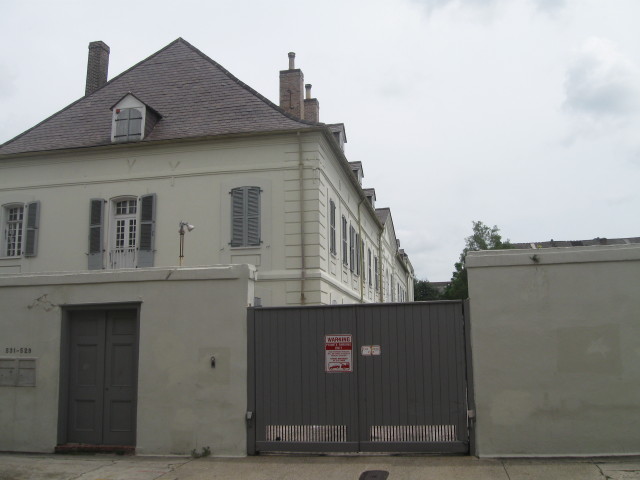
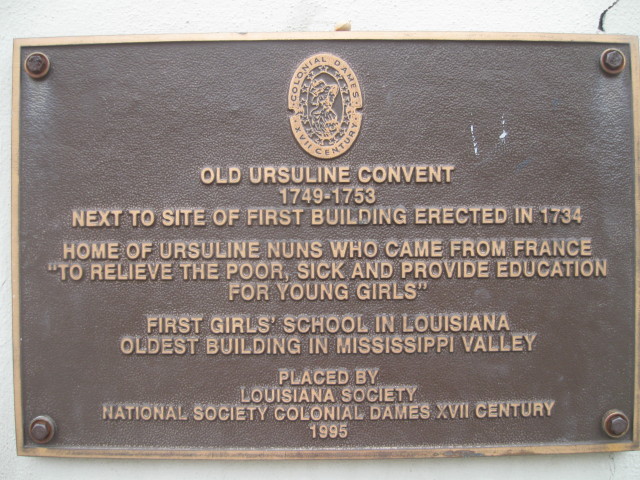
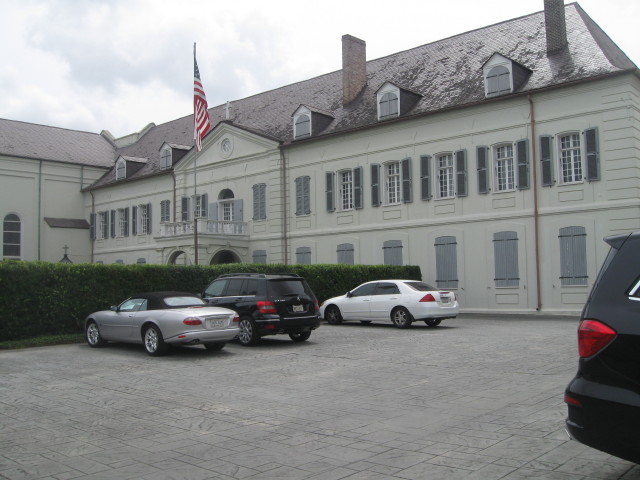
The courtyard of the Archbishop Antoine Blanc
Memorial complex, which contains the Old Ursuline Convent.
Constructed in 1745 during the French occupation the convent is
one of the city's oldest buildings.
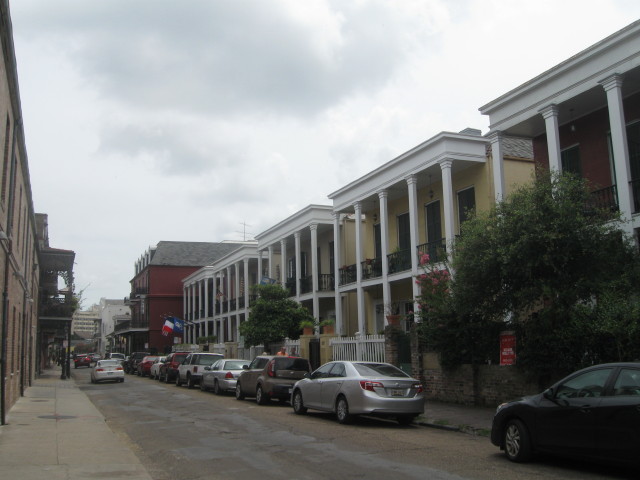
Looking down Chartres St.
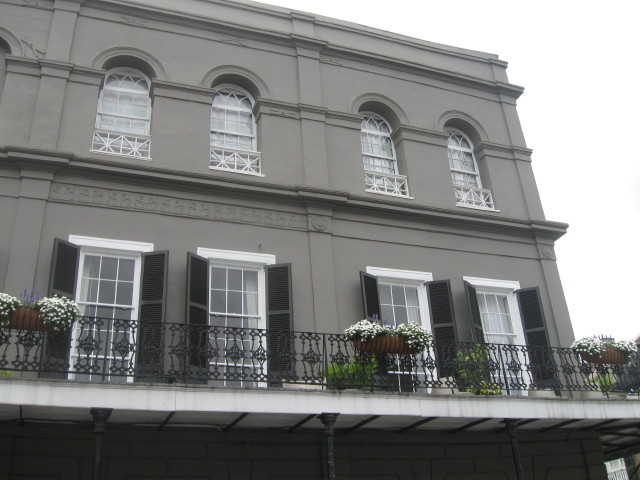
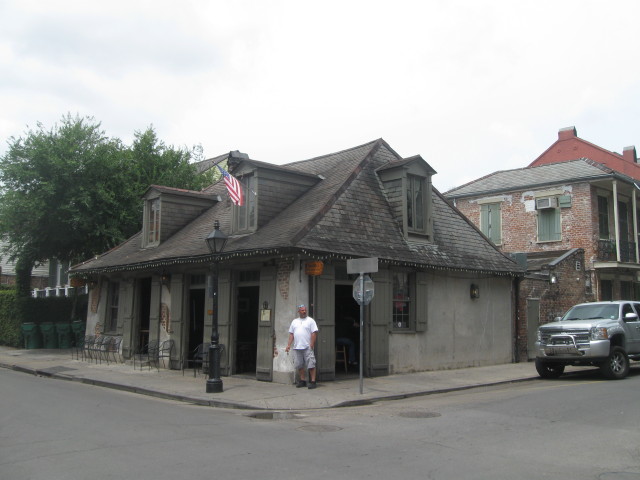
On the northwest corner of Bourbon and Philip Streets is one of
the oldest surviving buildings in the French Quarter. Lafitte's
Blacksmith Shop, now a tavern, dates to 1772. The privateer
Lafitte brothers were said to run the shop as a front for their
smuggling enterprises.
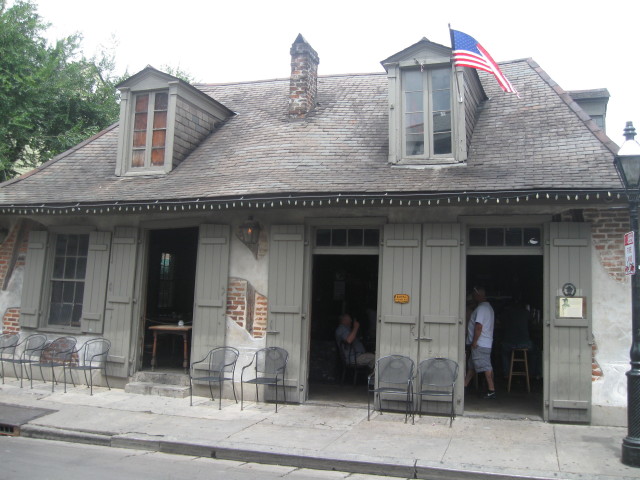
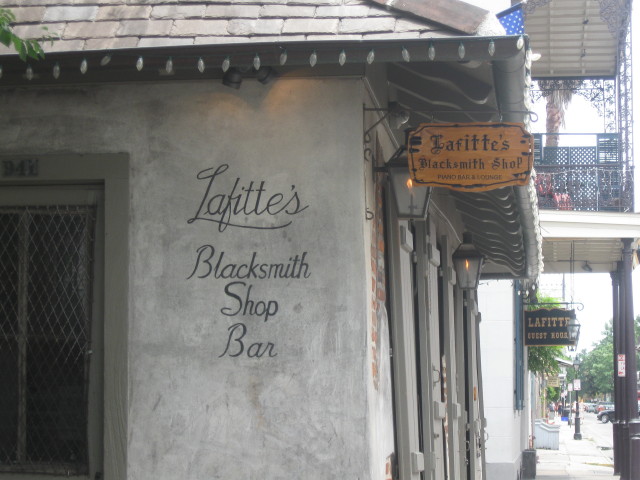
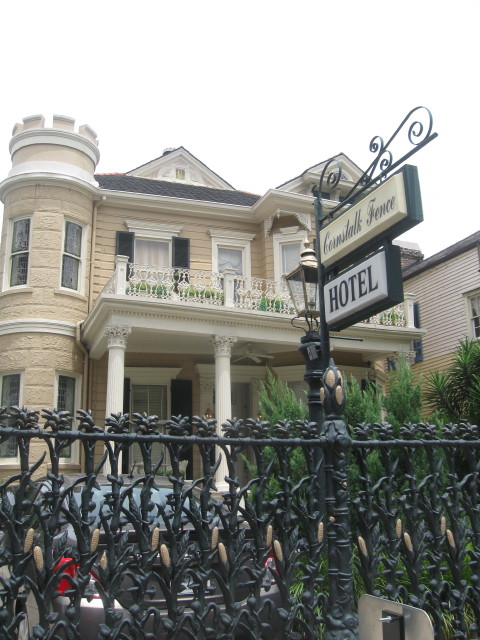
The green fence fronting a guest house at 915 Royal is a whimsical
piece of iron artistry, crafted in Philadelphia around 1834. A
similar fence surrounds a Fourth Street Garden District mansion.
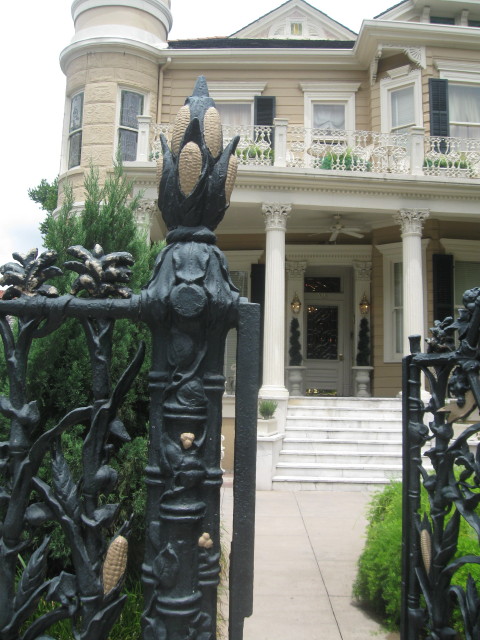
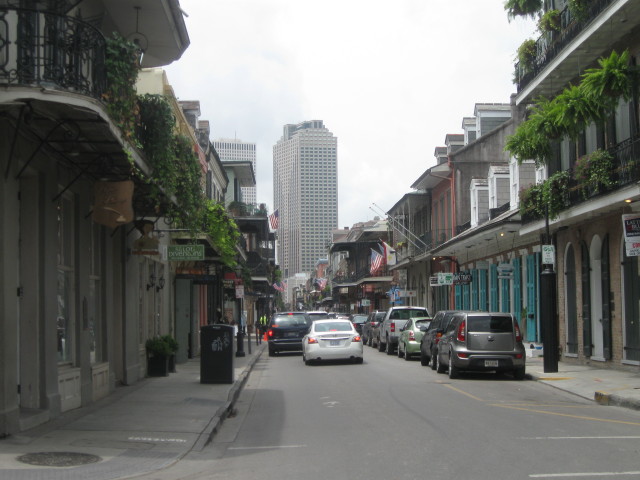
Looking up the long corridor of
Rue Royal. This the French
Quarter of novelists, satirists and playwrights: a setting for
John Kennedy Toole's outrageous "A Confederacy of Dunces," the
backdrop of Keyes' historical fiction and the inspiration for a
Pulitzer Prize-winning drama by Tennessee Williams. Although
Blanche DuBois' streetcar named Desire doesn't pass this way
anymore (the line was removed in the late 1940s, after Williams'
play was published), the Quarter's mystique, romance and allure
have preserved for future literati.
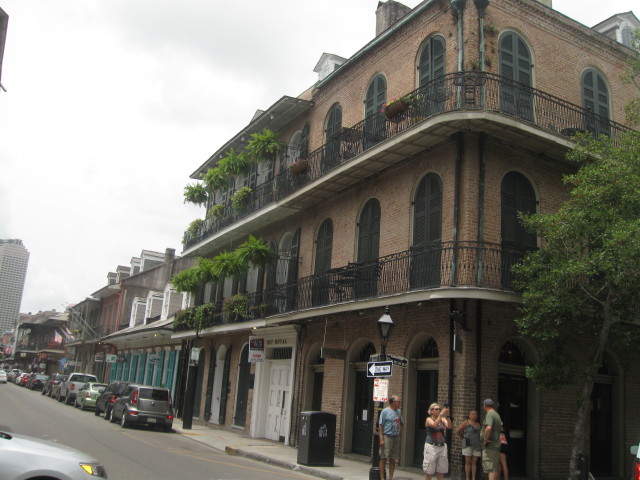
Labranche Building.
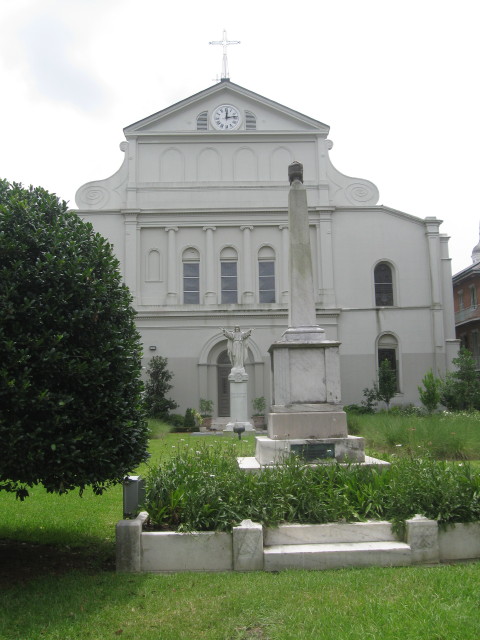
St. Anthony's Garden
.
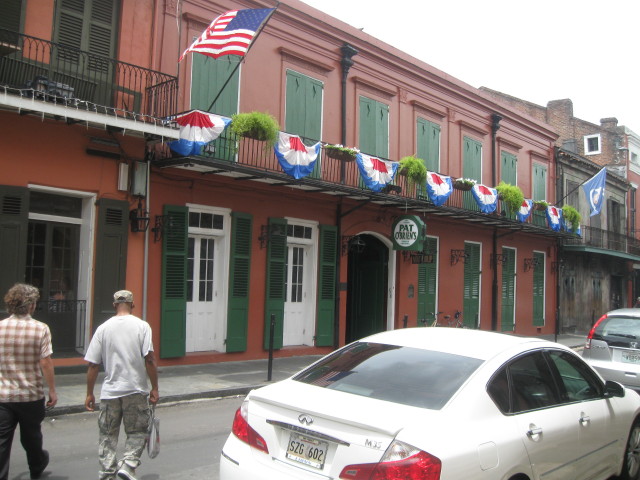
A popular nightspot
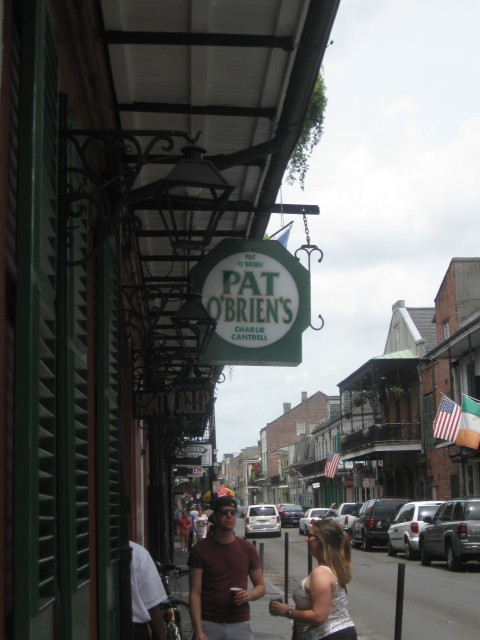
In the French Quarter, you can take your drink outside as long as
it is in a plastic or paper cup. After the bars close, sometimes
they need to use fire hoses to clean the streets.
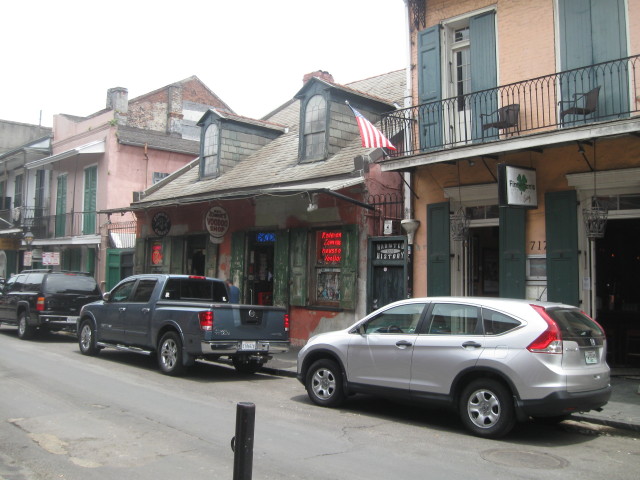
Rev Zombies Voodoo Shop.
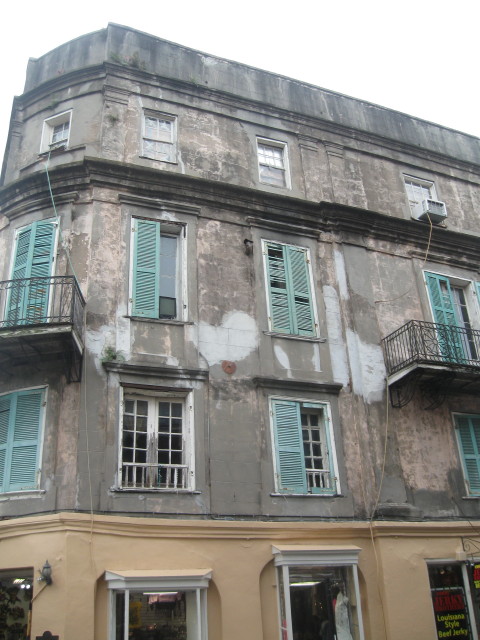
This four-story 1811 structure conceived as the first
"skyscraper." Protests that the subsoil would not support such a
tall edifice halted it a three floors; the fourth was added 65
years later.
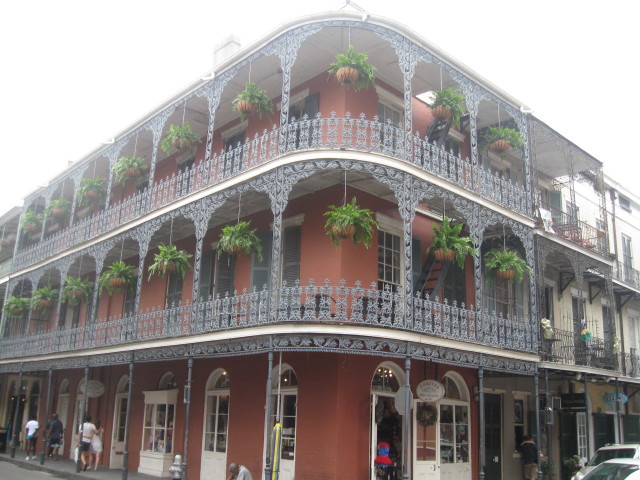
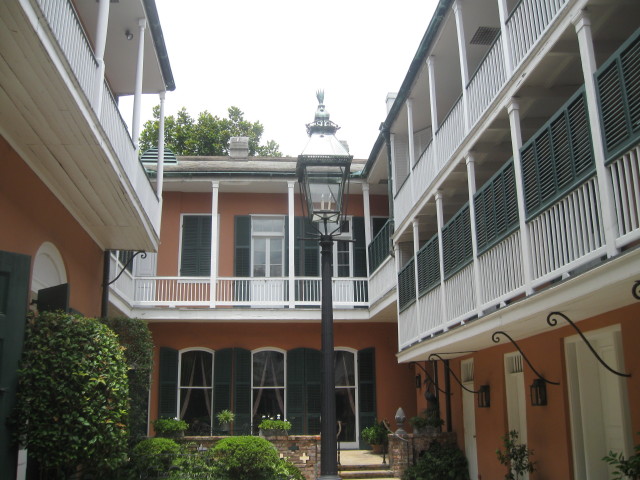
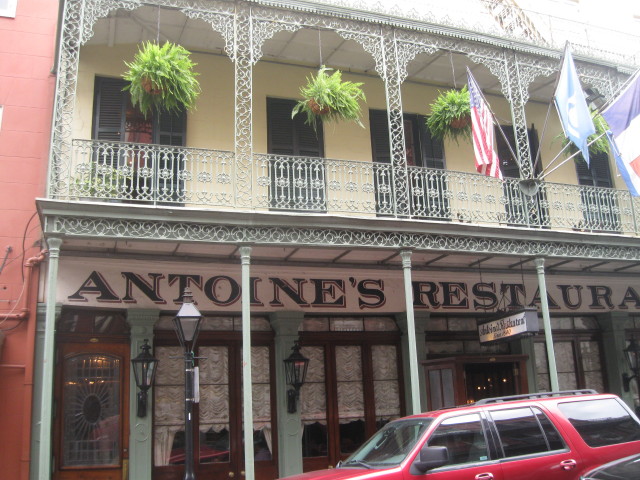
Antoine's, one of New Orleans' oldest family-operated restaurants.
French-born founder Antoine Alcistore's son created the
establishment's signature dish, oysters Rockefeller - so named for
its rich sauce- here in the late 1800s.
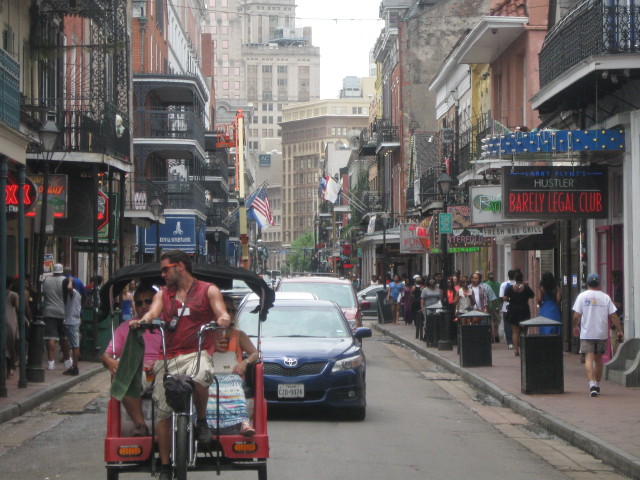
Bourbon Street.
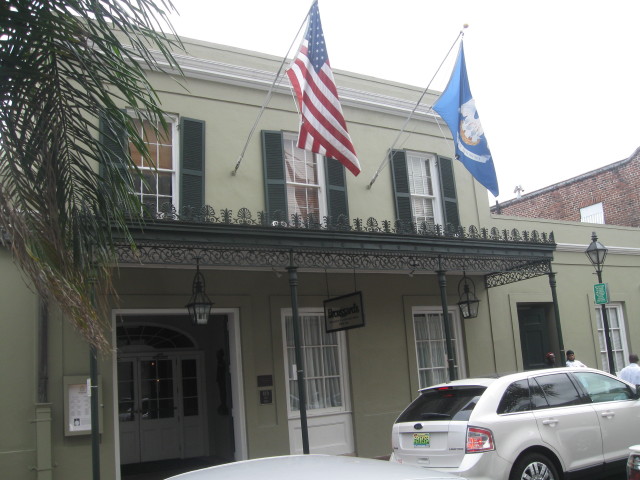
Broussard's was established in 1920 by Parisian-trained chef
Joseph Broussard.
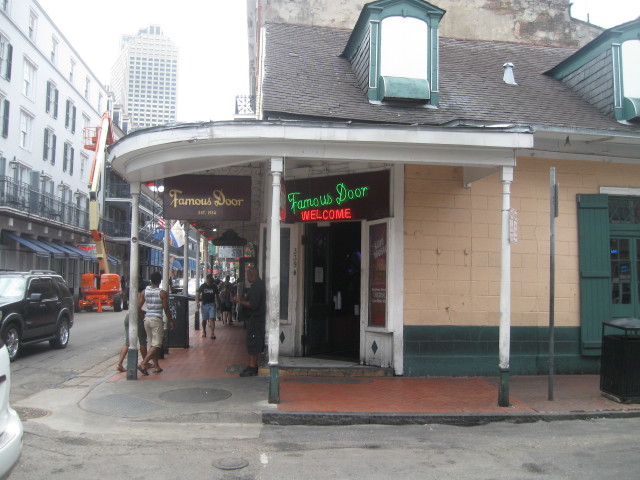
At the corner of Bourbon and Conti is the Famous Door. Jazz greats
have played this stage since 1934, and a roster of the luminaries
who have entered to be entertained frames the portal.
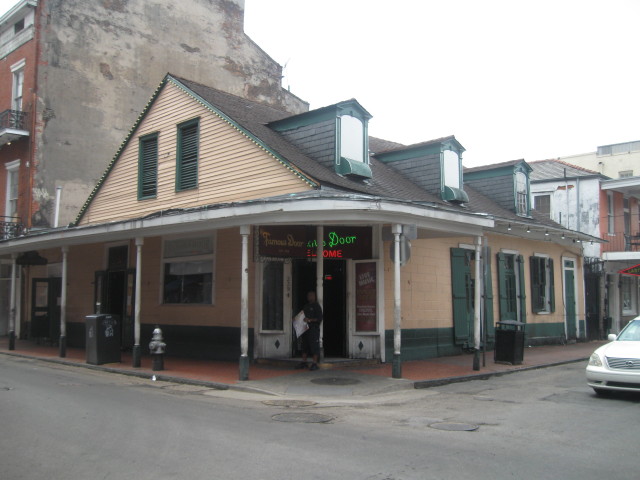
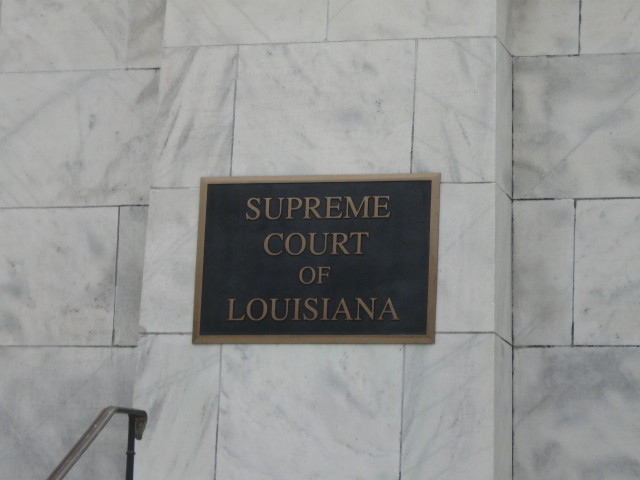
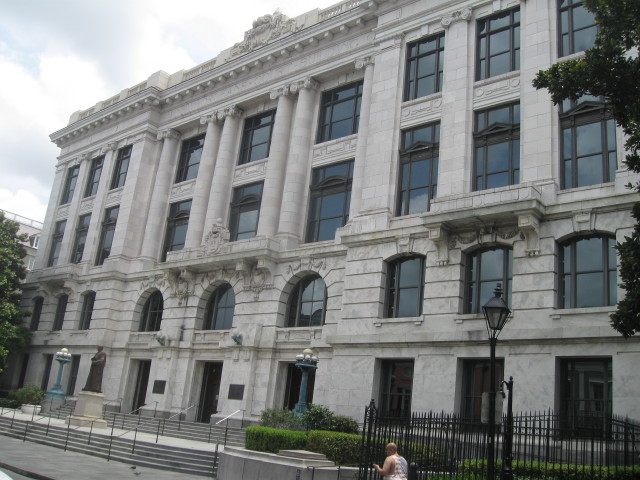
The oversize 1910 Beaux Arts-style style structure first housed
and state courts, then the Wildlife and Fisheries Commission. The
Louisiana Supreme Court now resides in the Civil Courts Building.
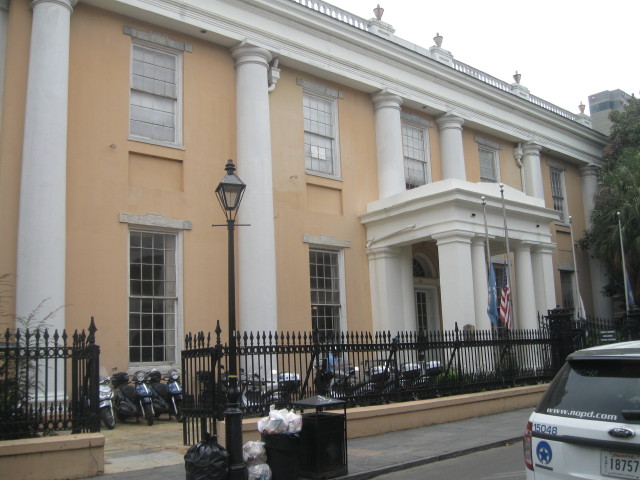
The grand old Bank of Louisiana building at 334 Royal now serves
as the French Quarter 8th District Police Station.
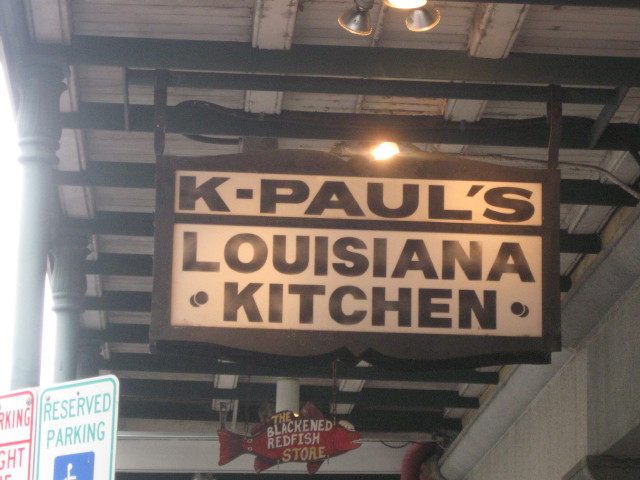
On the far side of the police station on Chartres is K-Paul's
Louisiana Kitchen. Chef Paul Prudhomme helped make Cajun cooking a
household name with the opening of his restaurant in 1979.
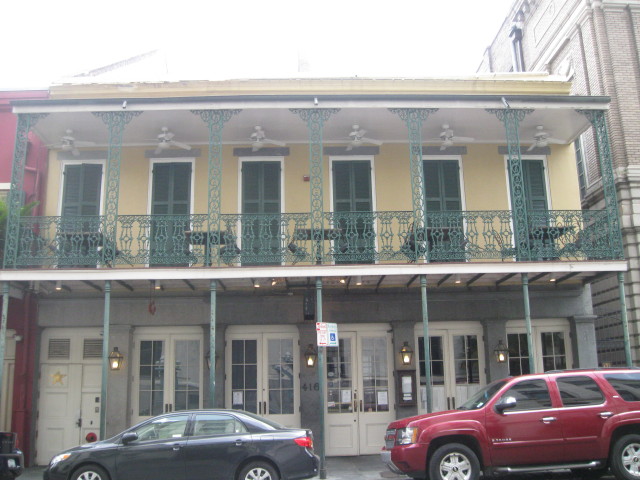
K-Paul's Louisiana Kitchen, 416 Chartres St.
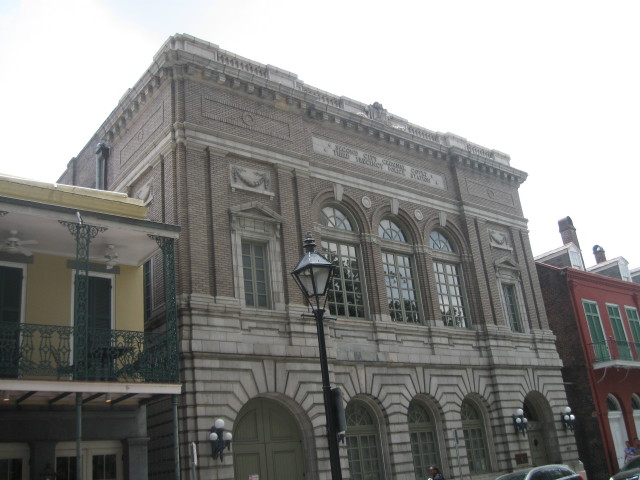
Next door to K-Paul's: Second City Criminal Court/ Third Precinct
Police Station.
Having finished up my AAA
Walking Tour of the French Quarter, I followed Chartres back to
the heart of the Vieux Carre', with cathedral spires in view.
Arriving back at Jackson Square, I walked through it and then
mounted the steps at Washington Artillery Park for panorama of
the historic plaza in one direction and in the other a view of
the mighty Mississippi River.
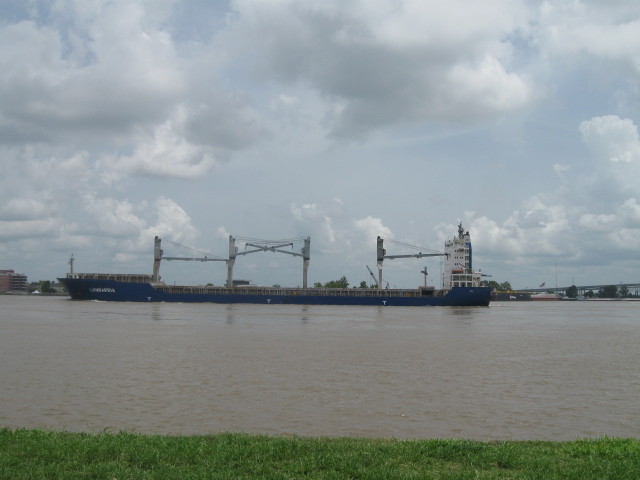
Standing on the levee at Moon Walk Park
While here and talking to a
local, who told me about the Canal St. Ferry that went to
Algiers, across the river. He was a good salesman so I decided
to make the trip and get a different view of the Crescent City.
I had the free time and would be able to ride the Riverfront
street car to the dock.
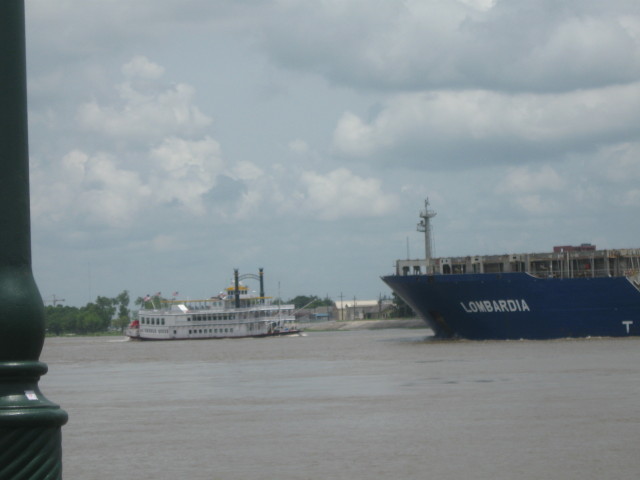
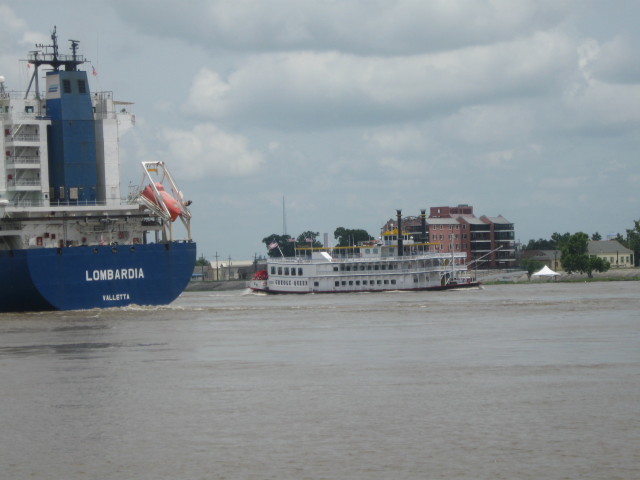
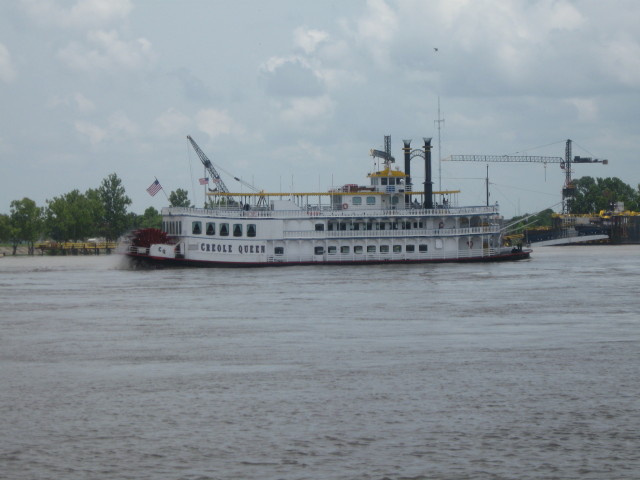
Creole Queen departs from the
Canal Street dock at the Riverwalk and offers a historical
battlefield cruise that stops at the Chalmette Battlefield
allowing time to disembark, visit and learn about this decisive
battle that changed American history.

Between the Moonwalk park and
the steps down to Jackson Square, is the right-of-way for the
two Riverfront tracks and the one freight line. Dubbed the
Riverfront line, service began on August 14, 1988. The line
parallels the Mississippi River, running beside the riverfront
levee and skirting the eastern edge of the French Quarter,
through an area that never had streetcar service. It was built
entirely on private right-of-way, along what was once mainline
trackage of the L&N Railroad.
Today, the Riverfront line is an integral
part of the New Orleans streetcar system. The line reaches from
the French Market to the Convention Center, passing the Audubon
Aquarium, major hotels and various tourist attractions on lower
Canal Street, cruise ship terminals and the ferry and riverboat
landings along the river. The line still hasn't lost its
railroad ancestry though. Trains of the New Orleans Public Belt
Railroad still rumble by on the adjacent track.
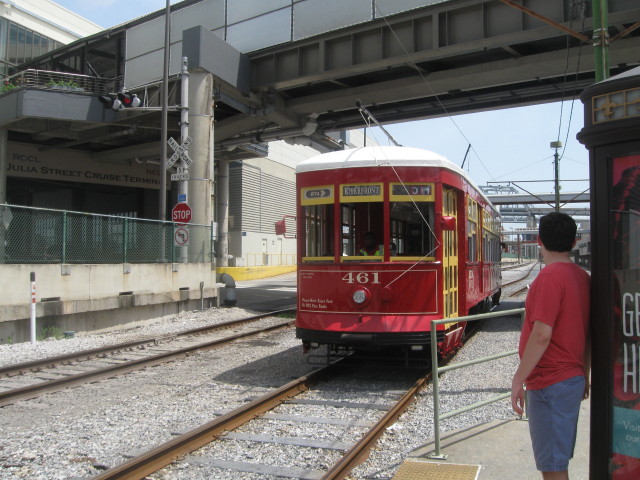
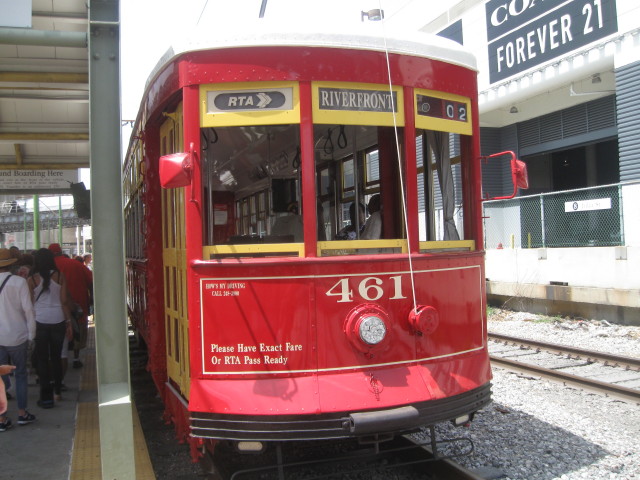
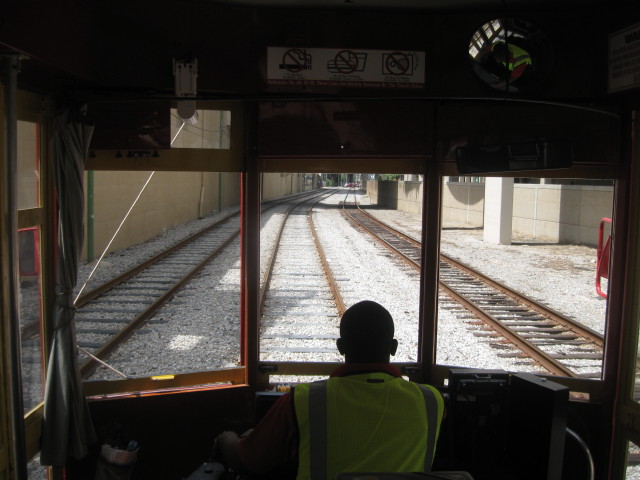
I used my Jazzy pass to ride to the end of line from Jackson
Square to the end of line and back to the Canal St. ferry dock.
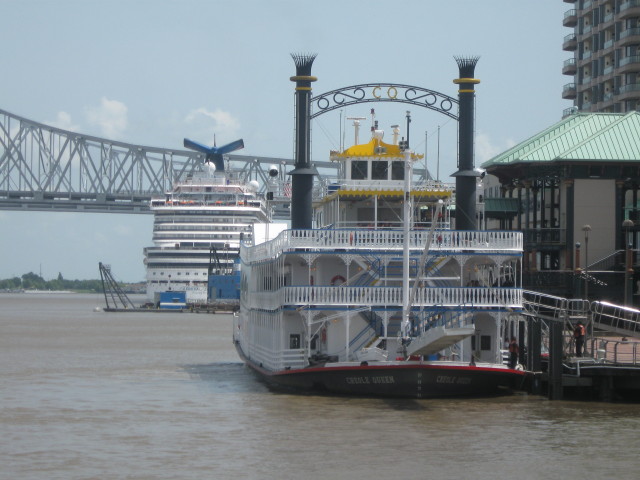
Creole Queen in front and behind is a Carnival Cruise ship. Photo
taken after the ferry just left the dock.
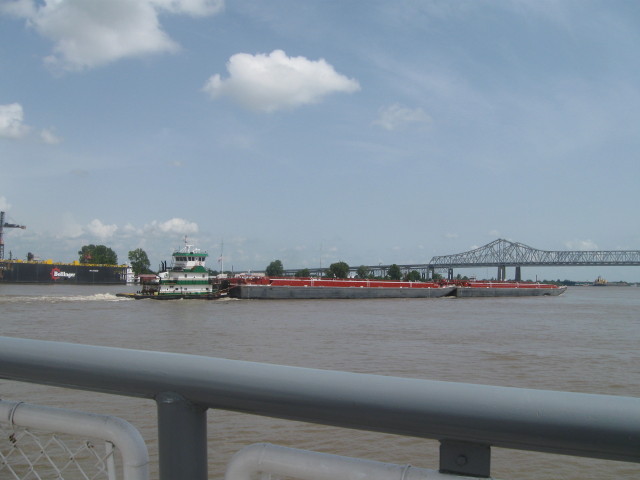
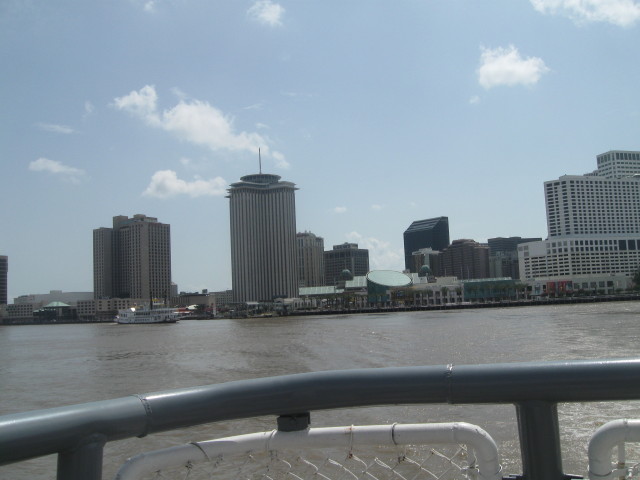
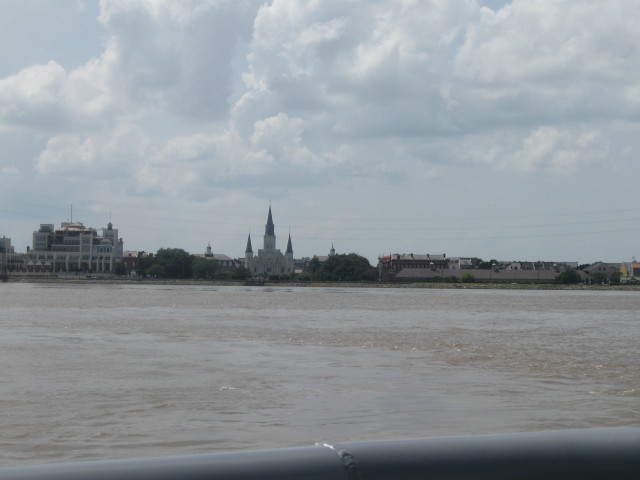
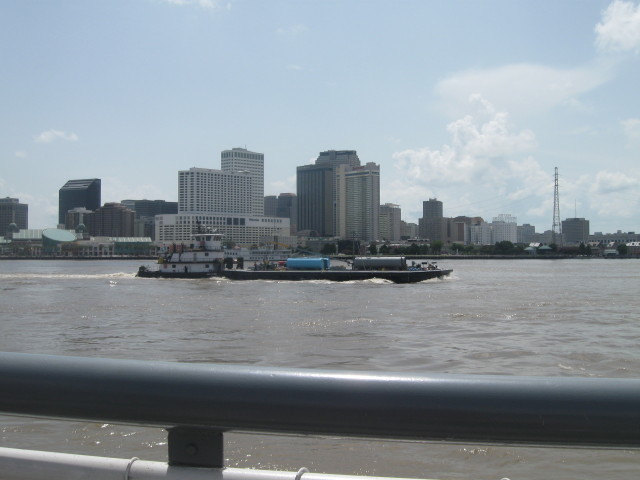
The ride over was short and pleasant and paid with my Jazzy pass.
After disembarking and walking from the ferry terminal (Morgan
St.) upon arriving in Algiers, I saw the Louis Armstrong
statue.
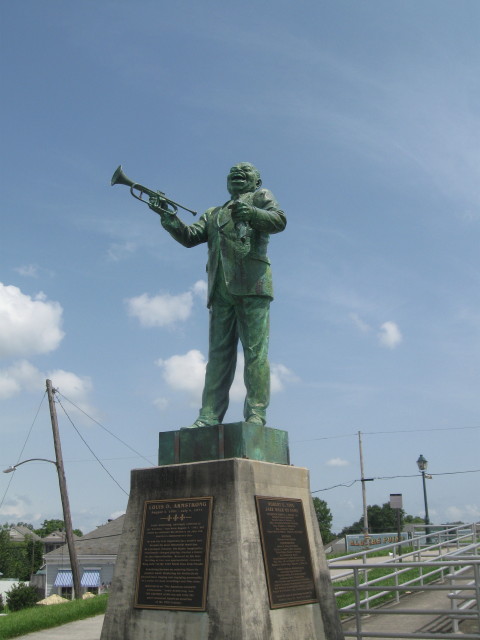
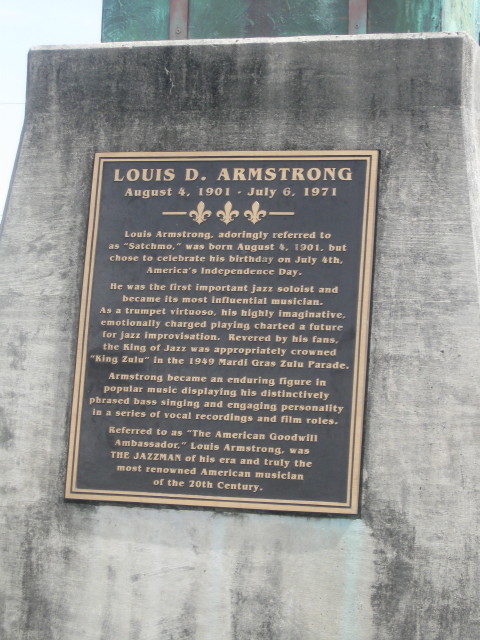
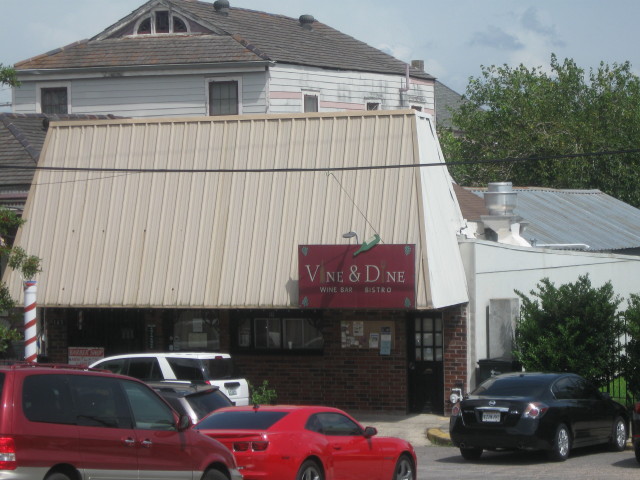
Limited commercialism here, this is a bed-room neighborhood.
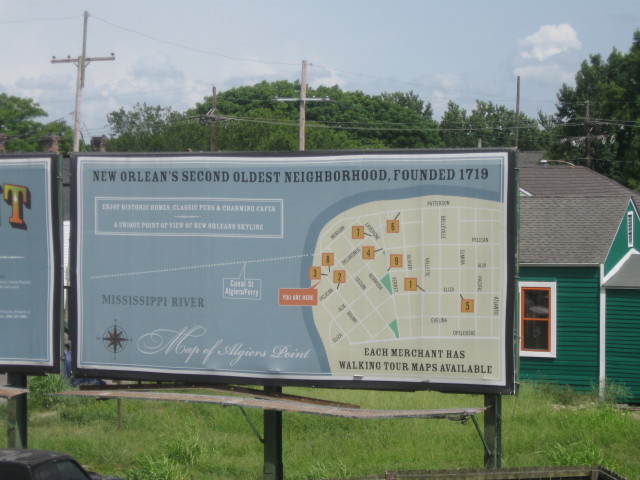
I am west of the Mississippi River for the first time in over
three weeks.
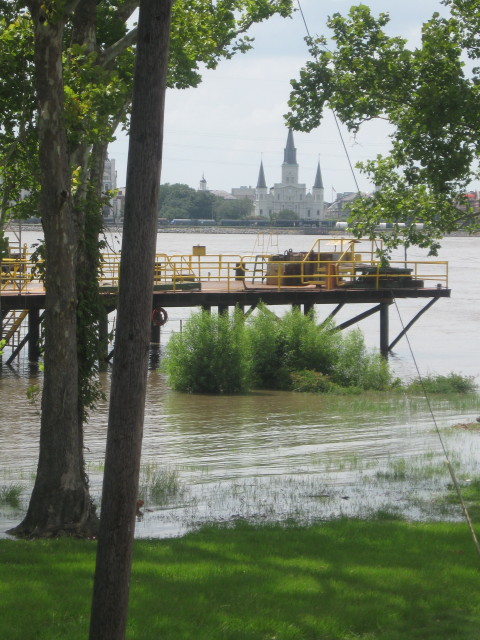
A tank car freight train can be seen passing Jackson Square.
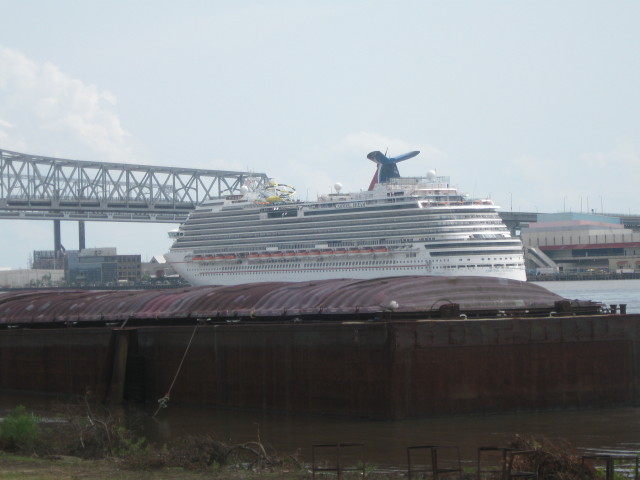 Carnival Dream.
Carnival Dream.
After about an hour visit, I
decided to end the exploring and recross the river. Returning to
the ferry terminal I boarded the next crossing with a view of
river traffic.

Heading out to the high seas.
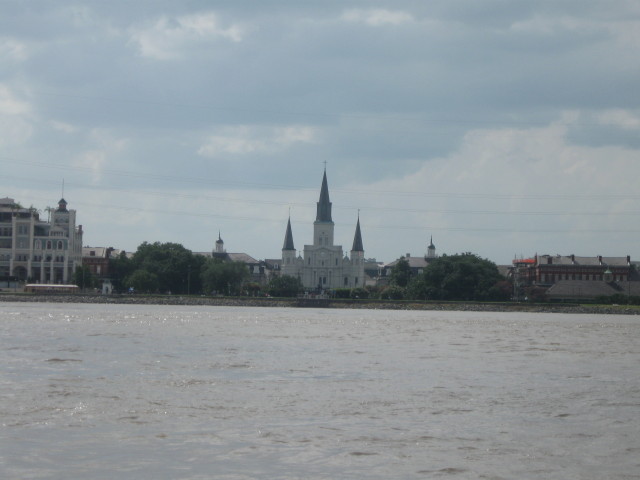
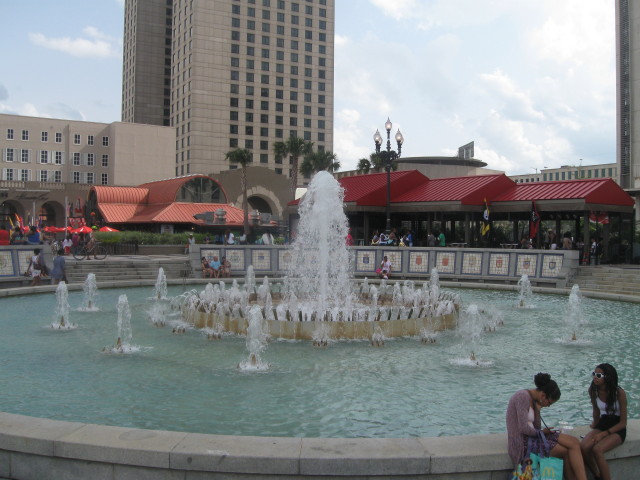
Spanish Plaza at the Canal Street Dock.
After docking I walked over
to Harrah's New Orleans Casino thinking maybe I could finding a
place to get a bite to eat. The casino floor was the biggest one
I ever been in. The place was packed and all the eateries were
very busy so I decided to head back to the hotel now and get
supper later on.
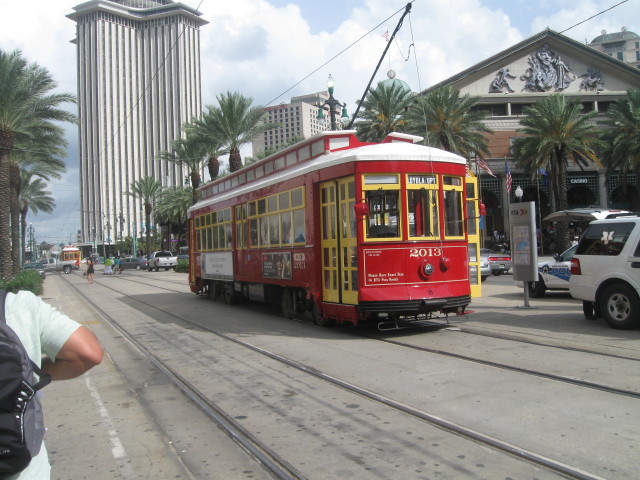
Canal St. Streetcar 2013 with Loyola/UPT heading and
Harrah's Casino on the right.
After leaving the casino, the
plan was to take the Canal St. streetcar to St. Charles Ave and
transfer to the St. Charles Line and back to the hotel. Arriving
at the streetcar stop, I joined the small crowd assembled. Soon
I discovered why the crowd was growing quickly. Several packed
full cars passed by without stopping, occurring at the same time
the sky's dark clouds portended an unmistakable storm
approaching. Then the wind picked up and it was blowing trash
everywhere, the temperatures were dropping and the queue was
rapidly growing. I decided not stand here any longer as rain
drops began to fall, bypassed the Canal St streetcar and walked
the five blocks to St. Charles Ave and get the street car there.
The walk was short but crowded as others also thought this was a
good plan. Arriving at the St. Charles stop, there was a crowd
waiting there and several full cars pass by. Shortly a car came
by that I could board and I took it back to hotel. Once there I
stopped next door at Popeye's for a to-go dinner. After eating
my meal, I started to repack for tomorrow's departure. Tomorrow
I will finish my return to the West Coast on Amtrak's Sunset
Limited.

